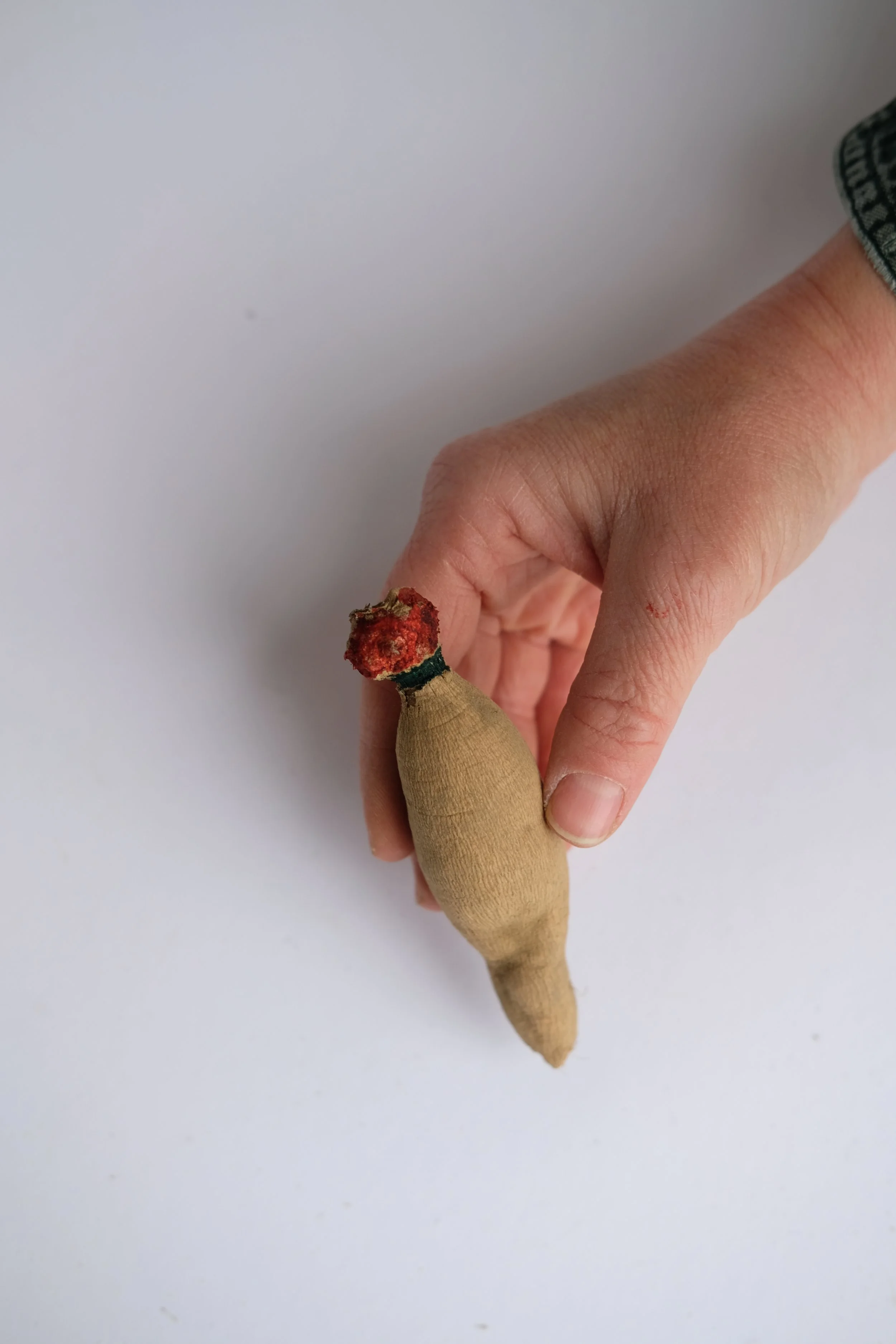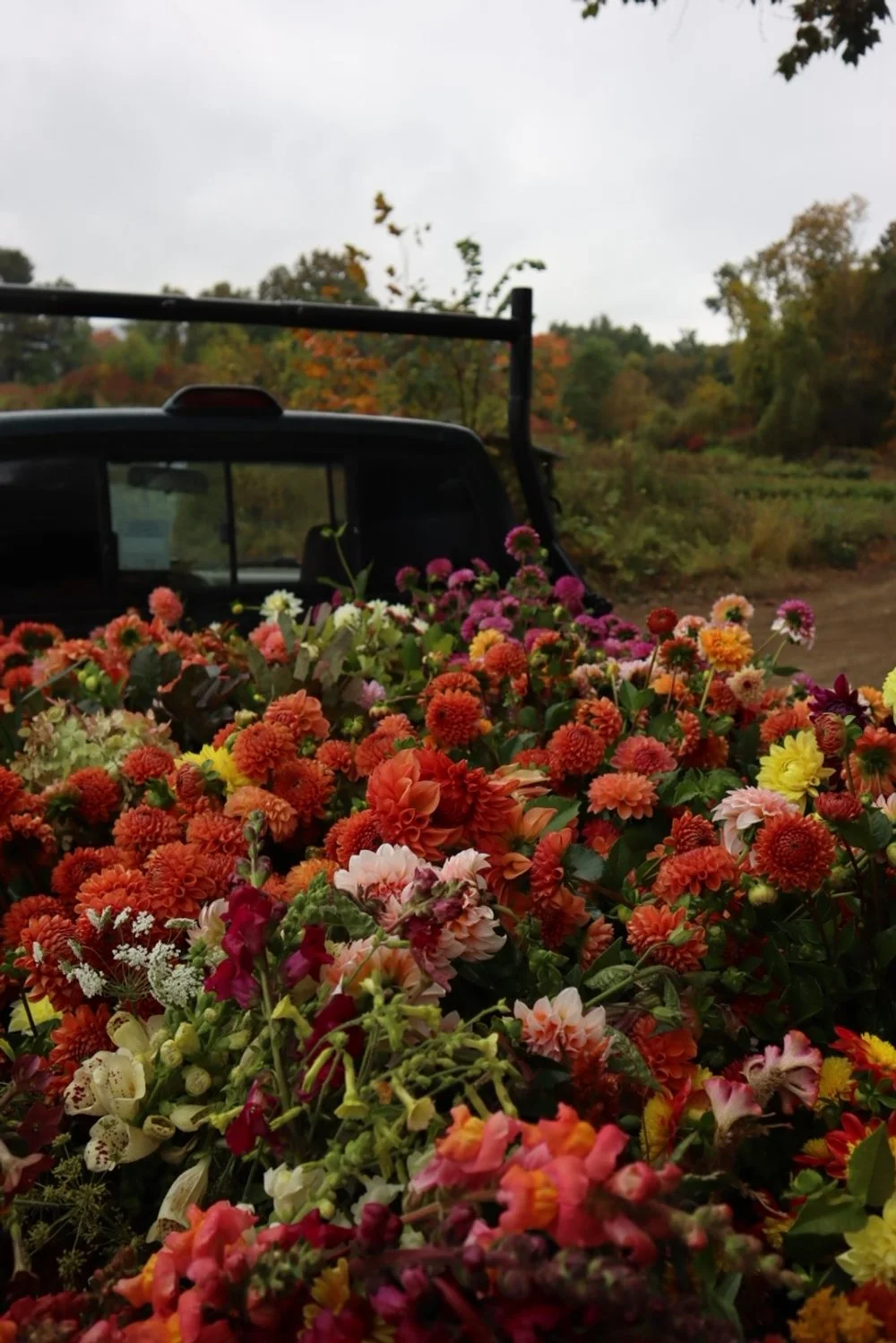Dahlia 101: Our Simple Growing Guide for Success with Dahlias!
HELLO, EVERYONE!
As we begin shipping out tubers across the nation this month, I thought it wise to share some of the tried-and-true strategies that we use on our farm to grow the highest quality dahlias, from tuber to bloom!
A QUICK ANATOMY LESSON
First, let’s talk about the anatomy of a tuber: every tuber has a CROWN, a NECK, and a BODY. On a dahlia tuber, the CROWN is where the new plant emerges from, so it’s essential to have a minimum of one centimeter of crown on the tuber to ensure that it will sprout a new plant. When the new plant is beginning to emerge from the crown, it is known as an “eye.” In order for the eye of the tuber to be fed from the body of the tuber, it needs to have an unbroken connection between the CROWN and the BODY—this is where the NECK comes in. Your tuber should have a strong neck in order to ensure the flow of starches from the body of the tuber to the eye as it begins to grow a new plant.
We went ahead and colored in a tuber in the photo below to show you the different parts. The red part is the crown—this is where the new plant will emerge from! The black part is the neck, and the rest of the tuber is the starchy body.
MYTH #1: SIZE MATTERS
What many of you may be surprised by is that for tubers, size DOESN’T matter. Our rule of thumb is that we plant any tuber with a viable eye so long as it’s as big as a double A battery. And in fact, we typically don’t plant the HUGE tubers because they tend to generate a weaker plant. Why is that? Because a huge tuber has so many starchy sugar reserves that the new plant doesn’t need to send out its roots to look for nutrients until it is much bigger. The result of this is a plant with a weaker root system, which will likely result in less productivity than that of a plant who came from a small-to-mid-sized tuber.
MYTH #2: WRINKLY IS BAD
Another general misconception about tubers is that if they are little wrinkly or a little dry that they are bad—this simply isn’t true! Take the photo above, for example: these tubers are lined up from top to bottom showcasing very bad desiccation (dryness), all the way down to a perfect tuber on the bottom of the line-up. The top two tubers in this line-up have sadly crossed over to the other side: in our opinion, these are too dry to plant and will likely result in poor plant growth (if at all). Tuber #3 could probably thrive, but for us it’s on the edge of being acceptable, therefore we probably wouldn’t plant it on our farm. This said, tubers #4 through #7 are all examples of tubers that we would plant on our farm! So long as the tuber isn’t fully dried out (or the other end of the spectrum and rotting), and has at least 1cm of crown attached with a strong connection to the tuber body, the odds about 95% positive that it will grow a stunning and beautiful plant full of dahlias later in the season. Moral of the story: a tuber doesn’t need to look perfect in order to produce a perfect plant! What a relief, eh?!
I RECEIVED MY TUBERS….NOW WHAT?!
First of all, thank you for your order! Our tuber sales each winter are the main way that we are able to keep our farm team employed year-round, so your purchase truly means so much.
Second, we begin shipping out our tuber orders each Spring in mid-March, and continue through until mid-May. Dahlias can be planted as late as July 1st if you have a long growing season, or if you plan to grow your later successions under cover in hoops or tunnels. Here on our farm, we plant our final tunnel succession in late June in order to have blooms all the way through the month of October.
Here is a list of tried-and-true strategies that we recommend for our buyers once they receive their tubers in the mail:
Open your package immediately upon receipt. Once you check your order over, we recommend keeping your tubers stored in the pine mulch that they are packed in until you are ready to plant. You can open your bag to increase airflow, and check on your tubers once a week to inspect for mold or shrivel. If your tuber is molding, it needs to be stored in a slightly dryer place; if your tuber is shriveling, it needs to be stored in a slightly more humid place. Adjust accordingly.
If you don’t see an eye on your tuber upon receiving it, don’t worry! We ship our tubers out PRIOR to warming them up, so it’s very common that we ship before we see visible eyes sprouting on the crowns. However, we follow our own rule of thumb and make sure to ship tubers to our customers that have a minimum 1cm of crown. If you don’t see an eye on your tuber after it has been in a consistent environment of 58 degrees or higher for two or more weeks, reach out to us! Send a photo of your tuber, along with your order number, and we will get a replacement shipped out to you right away.
Plant your tubers out after your zone's last frost date, or until the temperature of the soil has warmed to an average of 60 degrees. Here in Western MA (zone 5b) we put our first tubers in the ground anytime between May 8th & 15th. You can plant your tubers outside in the ground, or in large pots. Wherever you plant your tubers, be sure the site receives FULL sun throughout the day. Dahlias need full sun exposure in order to thrive.
Dig a shallow hole— about 4-6"" deep depending on the size of your tuber— and place your tuber in it HORIZONTALLY. Cover it with soil.
Do not water your tubers until you see green plant material above the soil line! Watering too early, or too much, can result in your tuber rotting.
Keep an eye on your plant’s development. Dahlias are divas in that they love a nice nutritious soil, and a dose of compost goes a long way to ensure lush leafy green, dark foliage and happy blooms.
Once your plant has 3-4 sets of true leaves, you can go ahead and pinch out the top two leaf sets. This is a practice called “pinching” and it will result in sturdier, bushier plants with more stems per plant! It will feel scary at first, but you’ll be so glad that you did it in the end! This is also a good time to stake and net your plants for added support; once they get too big it’s hard to coral them, and you run the risk of them toppling over in a storm or heavy rain.
Once your plant begins to flower, the more flowers you cut, the more the plant will produce, so cut away and ENJOY!
Thank you again for your interest in our dahlia tubers and how to grow them! If you’re in the market for tubers, pop over to our online Tuber Shop to browse through our catalog of offerings!
Wishing you all a wonderful and abundant growing season!




